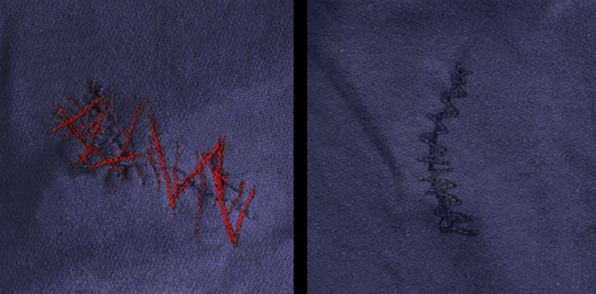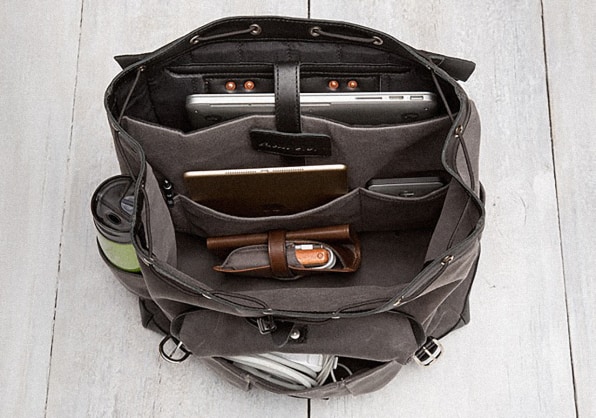How Can Designed Experiments Be Used to Improve Product Design
Take a look around you. What's the most valued possession you see? Guitar? Computer? A nice pair of designer shoes? And what do they all have in common? Chances are, they could all be easily replaced if you lost or broke them, as long as you have the money to do it.
But do you also own a favorite coffee cup, maybe with a chip in the rim, or a handle that you superglued back on? Or perhaps your leather bike saddle has worn itself to fit you perfectly, despite the fact that you had to lace its sagging sides together several summers ago? Something irreplaceable, something better because of its scars and faults.
Which of these is more valuable to you?
Repair or Replace?
Repairing has obvious environmental benefits, and in theory it means that you can afford to spend more on the original item, getting something better for less, in the long run. This fits the modern trend for simplifying our lives, decluttering our homes, and trying to buy fewer physical goods.
But it's not so easy to do, because most products aren't designed to be mended. I spoke to Jake Bronstein of Flint and Tinder—maker of the famous 10-Year Hoodie—and he points out that most companies design their goods to be "so cheap they can be replaced completely and still come out ahead financially." Flint and Tinder, on the other hand, is "saying they're so well made we'll mend them free of charge."

Designing for Repair
Repair is usually low on the feature list. Take the modern smartphone, designed to last only until your contract is up in two years time. It's glued together, and each generation sees yet more discrete—and replaceable—parts shrunken onto the main circuit board in order to squeeze more battery into the case.
If you offer a 10-year warranty, you're not only designing something to last. You have to make it easy to repair. Especially if, like Flint and Tinder, or Minnesota-based bag and case maker Pad & Quill, you're promising to repair it yourself.
In an email, Bronstein detailed some of the features that make repairing the 10-year Hoodie possible. In addition to tough, three-end knit fabric, which threads thinner yarn through the holes left by the thicker yarns for a harder-wearing result, Flint and Tinder adds some clever touches which both avoid the need for repair, and make that repair easier when things eventually break.
Safety seaming that doesn't come apart even if you break the thread (thread can break in the dryer's high heat, this combined with stitching that unravels is how most garments come undone).
We use the highest quality zippers, but then we lock them in with twill tape in a way that–should the need arise–we get them out and replaced easily.
We relaxed the cuffs slightly, then adjusted for it, so that the fit doesn't change over years of washing and drying.

The Future Of Fashion
Another consideration for long-lasting goods is fashion. What looks good today might seem pretty dorky in the future. Levi 501s were just about the coolest thing you could wear in the 1980s, but today they're lame-o dad jeans.
One solution is classic design. Hoodies don't change much, and Pad & Quill's founder Brian Holmes went for classic lines with his new backpacks and briefcases, which have a 25-year warranty.
"When we looked at making our first backpack, we said let's take cues from classic backpack construction and then add the materials and the design lines that we feel best represent our brand." And if you look at P & Q's Leather Backpack from the outside, it could be something you found in your grandfather's basement. And that's the idea.
"I hope that, in 25 years, the backpack we make looks similar to this one because the design proved to be timeless," says Holmes. "I guess only time will tell."

Nothing Lasts A Lifetime
Both companies have put a number on their warranties, instead of the usual hand-wavy claims for a "lifetime" of support. "By stating the actual years," says Holmes, "we are making a statement that it's built very well." When people ask why he didn't choose the more common lifetime warranty, he tells them "Lifetime is so generic and does not seem like a covenant you make with your customer. It's a throw away line."
A nice side effect of designing your products to last, you minimize claims on your warranty. Of around 45,000 10-Year Hoodies sold "it looks like we've done repairs on around 300," says Bronstein. "So just under one in 100."
Holmes says that most of P & Q's rare claims have been related to manufacturing defects, which show up early. Customers are then offered a straight replacement or a repair.
And people like the mended rips and tears. Flint and Tinder offers two kinds of repair: inconspicuous or conspicuous. Conspicuous repair uses contrasting threads and "interesting" stitching.
"About half go for the more interesting look," says Bronstein. In other words, they're proud to be wearing something that lasts.
How Can Designed Experiments Be Used to Improve Product Design
Source: https://www.fastcompany.com/3047804/how-to-design-products-to-last-a-lifetime
0 Response to "How Can Designed Experiments Be Used to Improve Product Design"
Enregistrer un commentaire